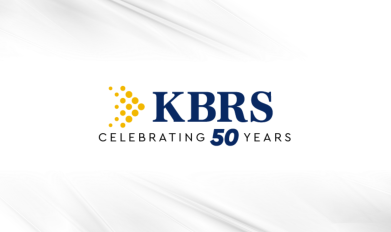Imagine if, overnight, your CEO left the organization, how would your organization ensure continued success going forward? What about the other critical roles on your team, how would you manage with the loss of their experience and knowledge? It’s a frightening thought for most business leaders which is why organizations are taking a more proactive approach to succession planning.
A recent panel discussion hosted by KBRS centered on the topic of succession and talent management, and featured three local HR leaders. Valuable advice and insight was provided by Joanne Brown, Executive Vice President of Human Resources, High Liner Foods; Kathleen O’Regan, Vice President, Human Resources, O’Regan’s Automotive Group; and Cheryl Fraser, Chief Talent Officer, Crombie REIT. The conversation focused on five key factors HR professionals and business leaders will need to make succession a priority for their organizations.
Be courageous
If you are the individual responsible for ensuring your people strategy is aligned with business strategy, Cheryl Fraser offers this advice when it comes to succession and talent management. “You need to be courageous. You’ve got to believe in it and you’ve got to sell it. If you let anyone tell you it’s not for us, not right now, or put it on a back burner, it’s never going to work.” Without courageous conversations at the most senior levels, your organization will be left with a significant business continuity risk. “The organization’s talent strategy needs to be just as important as the organization’s business strategy”.
Have buy-in at the top
To ensure success, ownership needs to start at the Executive level. Joanne Brown recommends you “have your CEO and leadership at your side”. Without buy-in from the top tiers of the organization the initiative is often doomed for failure. It is imperative that senior leaders assume visible, supportive roles in the succession and talent management process and integrate leadership development into risk management discussions.
Know your business
If you are an HR professional, you can likely rattle off HR policies and best practices, but do you really know the business? Do you understand how the money is made and spent? And are you able to link business strategy to employee development and training in a compelling way? Having a complete sense of how the business works builds credibility with senior leaders and employees alike. It also better enables HR professionals to develop initiatives aligned with the business needs and successfully sell that initiative to the rest of the organization with authority.
Build the business case
Kathleen O’Regan, encourages HR professionals to put the case for a strong talent management strategy and succession plan in terms that resonate with leaders, “dollars and cents.” To ensure buy-in among senior leaders it’s critical that the plan clearly links to the organization’s strategic imperatives and, ultimately, the bottom line. Having a solid, dollars-driven business case ensures the rational for spending time and energy on talent management is indisputable.
Hold yourself and others accountable
As with any goal, whether personal or professional, holding yourself (and others) accountable to achieve what you set out to achieve is key to success. Succession and talent management goals should be treated as any other organizational goal with clear metrics, measured over time. All individuals should be held accountable to these targets across all HR practices, including performance management and compensation incentives. At High Liner Foods, succession plans have been addressed in the company’s public strategic goals, and everyone on the senior management team had succession tied to their own professional goals, because, as Joanne Brown says, “accountability overall drives success.” Increasingly organizations require that the Board, CEO and senior executives be committed to and accountable for identifying and developing future leaders.
When your organization has a visible succession plan you are helping to protect the long-term future of your organization and facilitating business continuity and growth. You are providing assurance to key clients and customers (internally and externally), helping to preserve their confidence in your organization. Even if key leaders and specialists leave your organization, they know the products and services will still be at their disposal. By focusing on developing talent from within your organization, your top talent and employees will strive for excellence, knowing that with training, exposure to mission critical experiences and coaching, they too could have the opportunity to move into key positions and progress in their careers.
This article represents the collective opinions expressed during a panel discussion hosted by KBRS and moderated by Tony Case, Senior Consultant.






